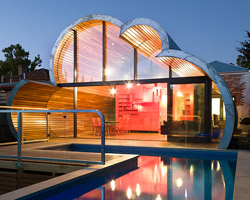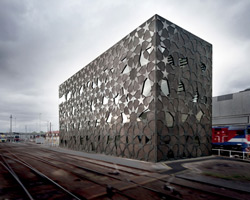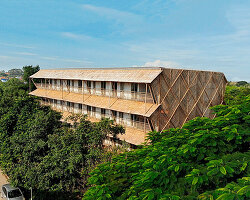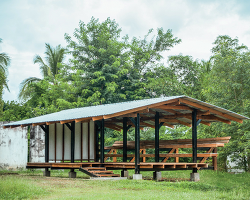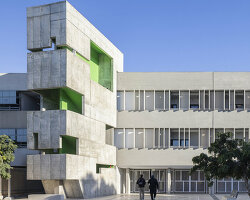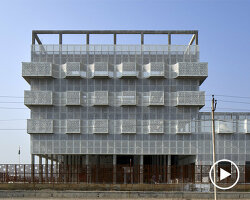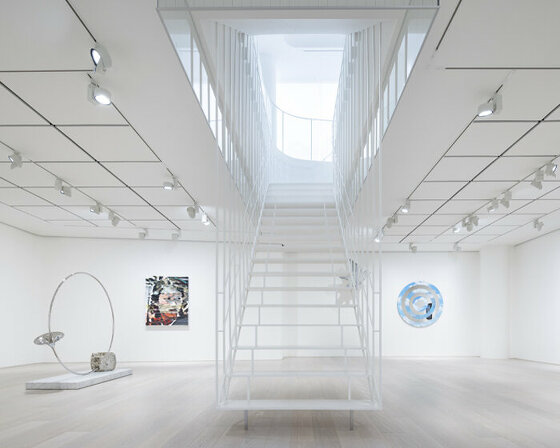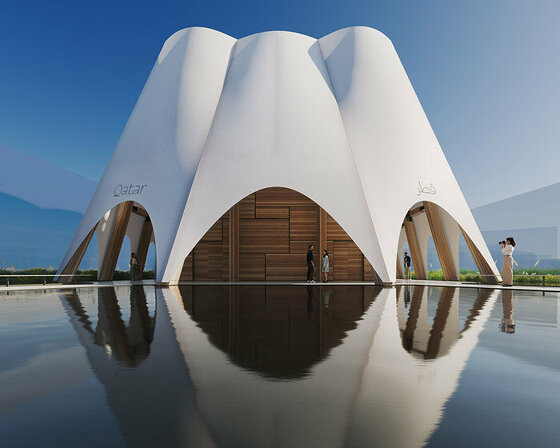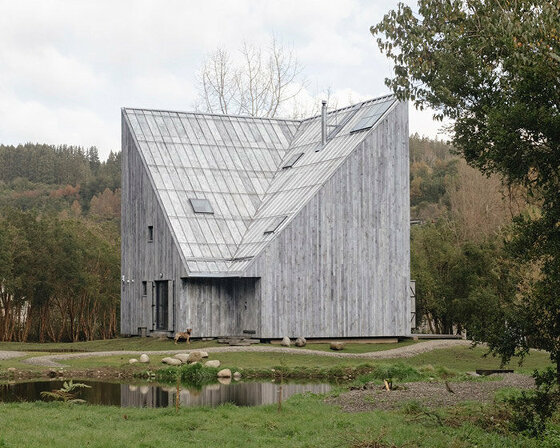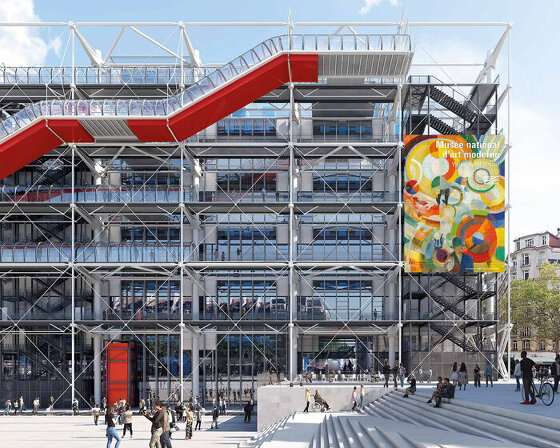KEEP UP WITH OUR DAILY AND WEEKLY NEWSLETTERS
PRODUCT LIBRARY
the minimalist gallery space gently curves at all corners and expands over three floors.
kengo kuma's qatar pavilion draws inspiration from qatari dhow boat construction and japan's heritage of wood joinery.
connections: +730
the home is designed as a single, monolithic volume folded into two halves, its distinct facades framing scenic lake views.
the winning proposal, revitalizing the structure in line with its founding principles, was unveiled during a press conference today, june 20th.
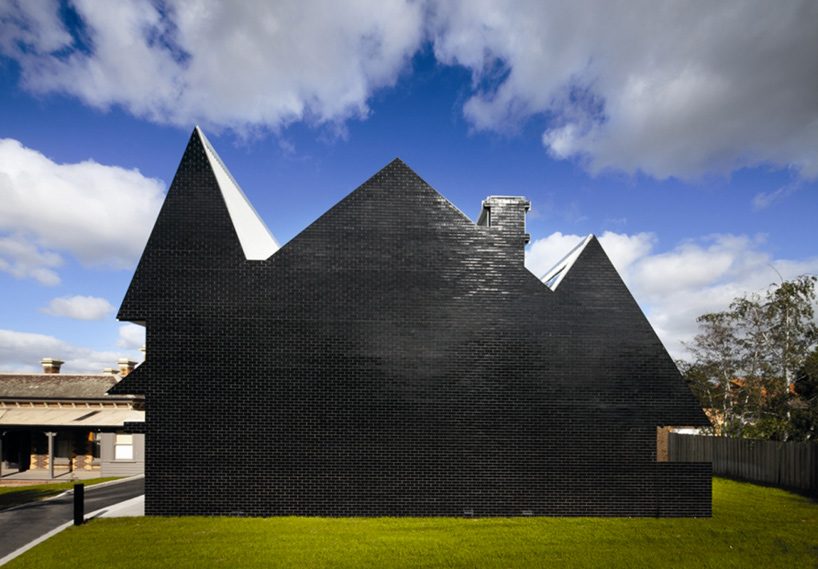
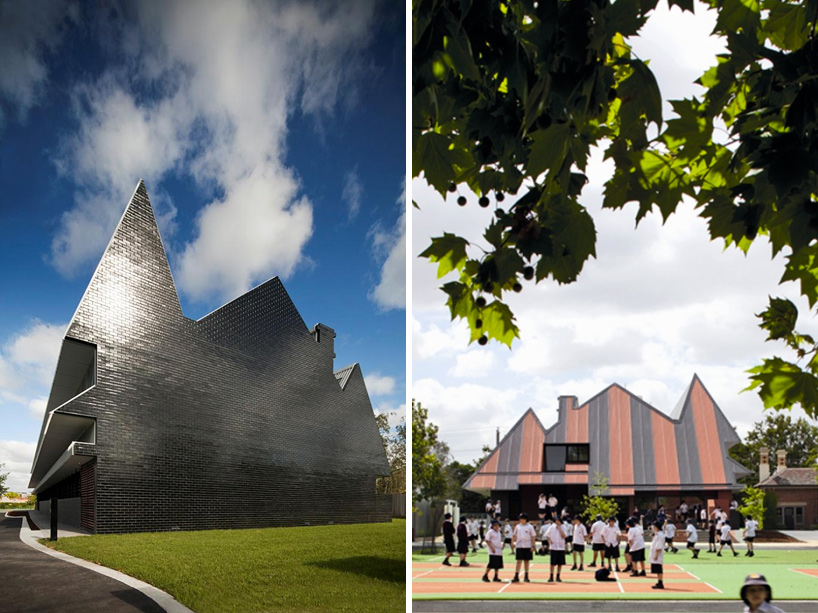 (left) east facade (right) west facade
(left) east facade (right) west facade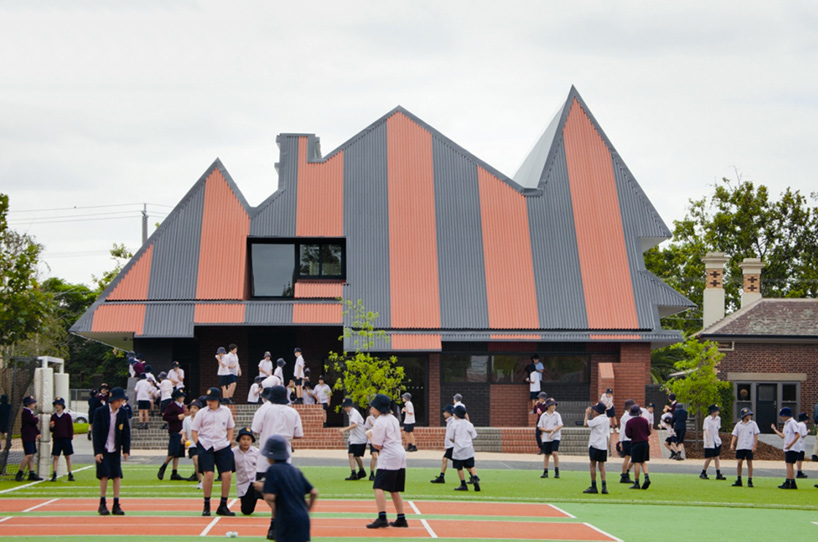 main entrance and outdoor area
main entrance and outdoor area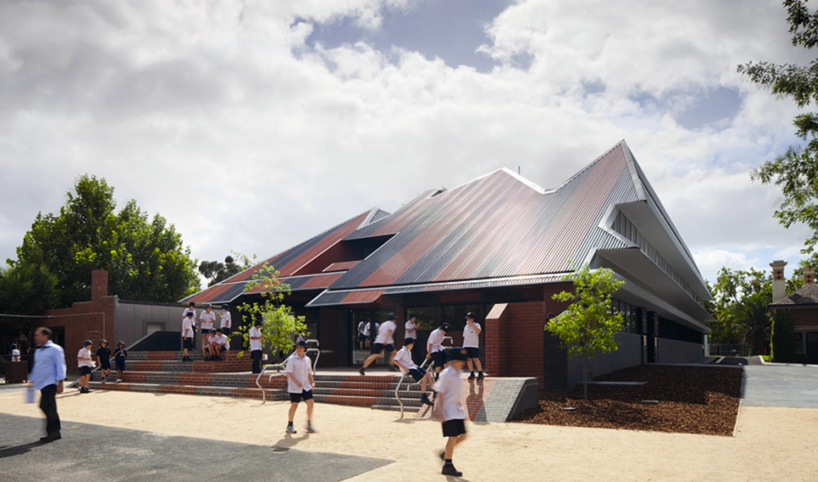 approach
approach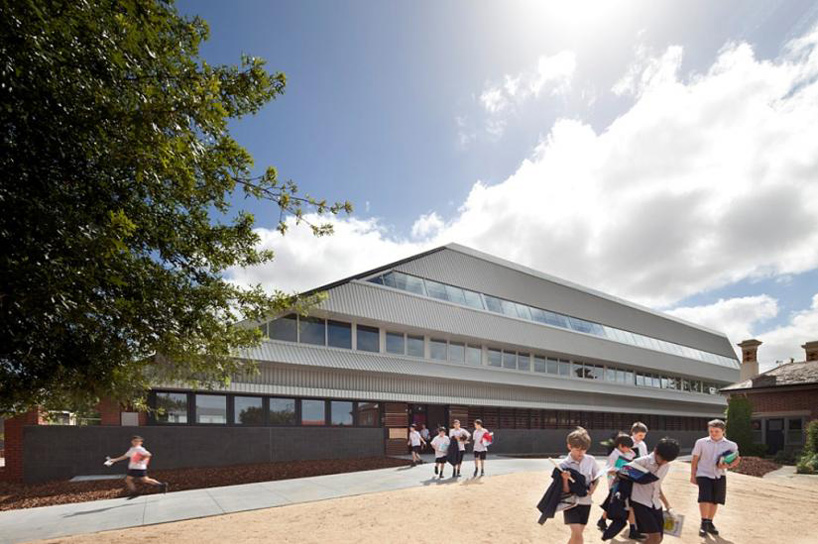 street view
street view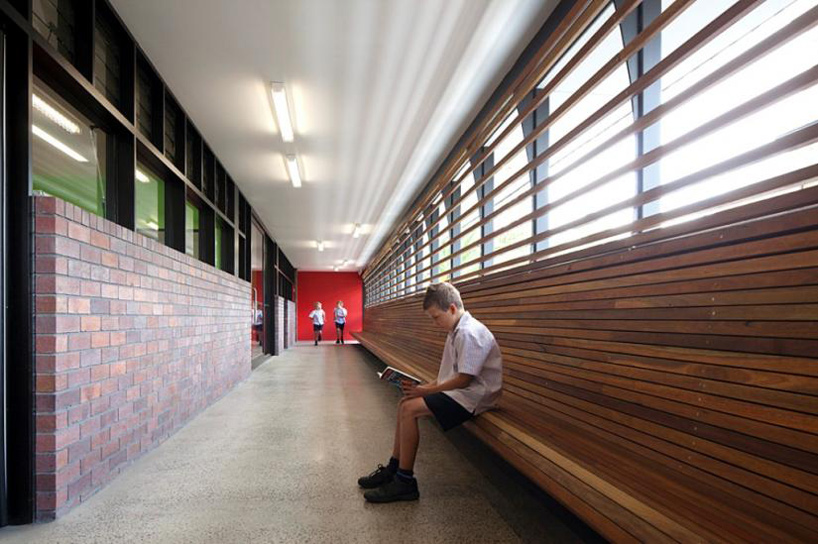 hallway
hallway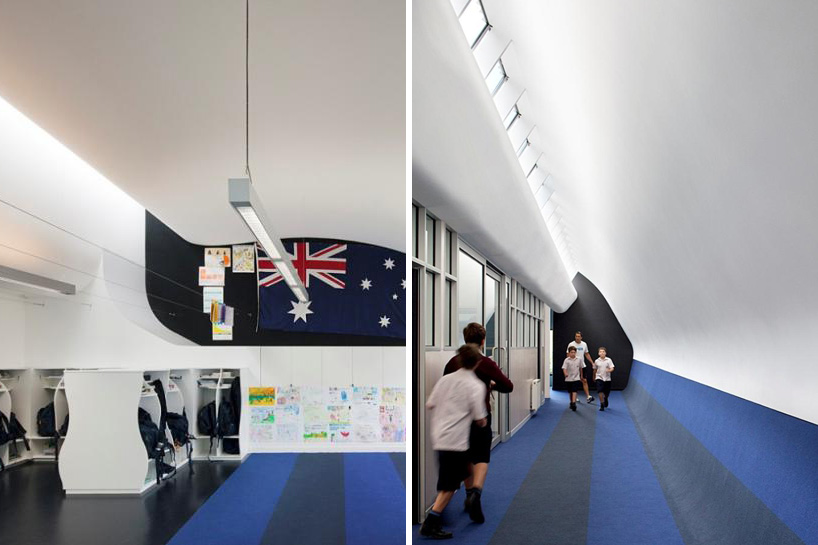 (left) classroom (right) circulation
(left) classroom (right) circulation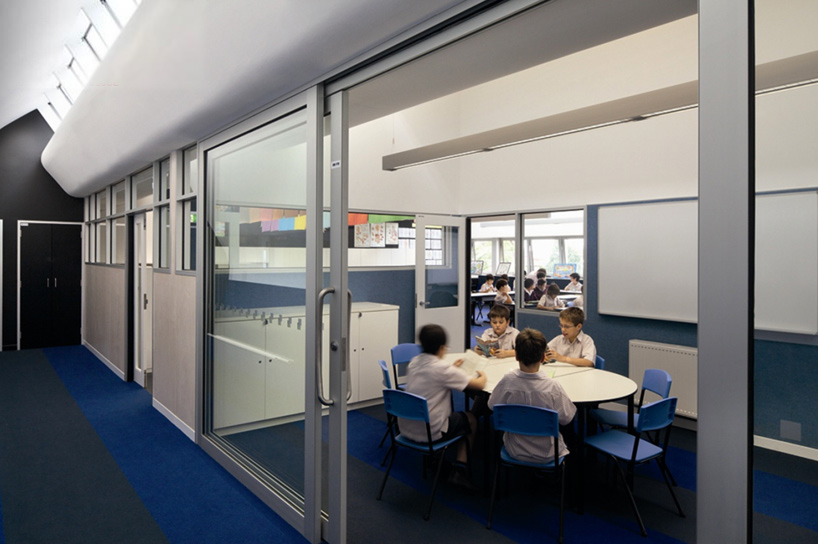 working room
working room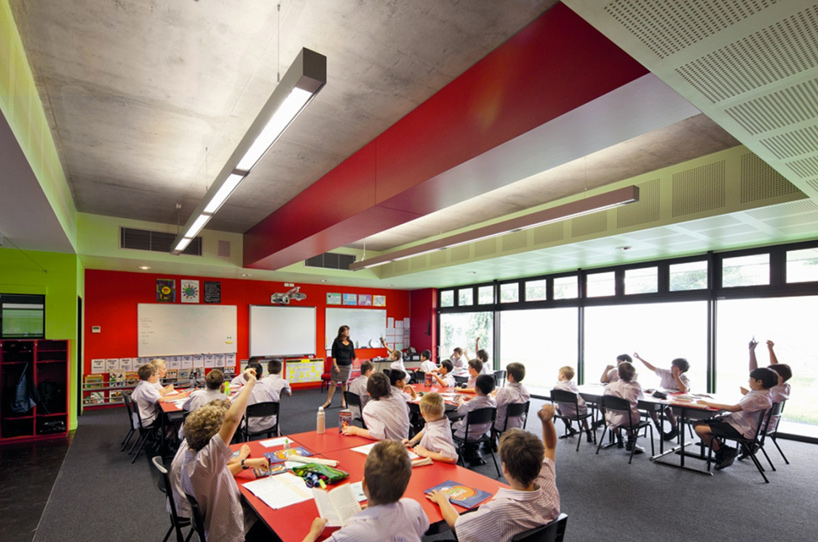 classroom on ground level
classroom on ground level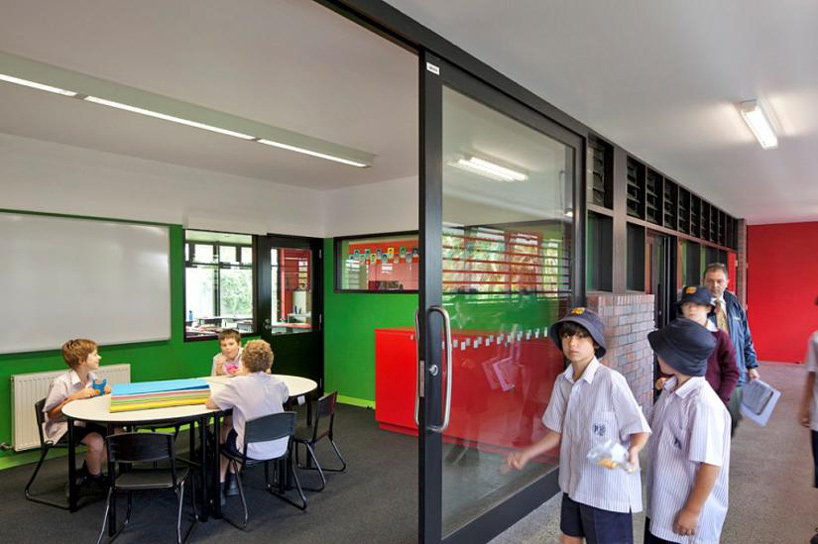
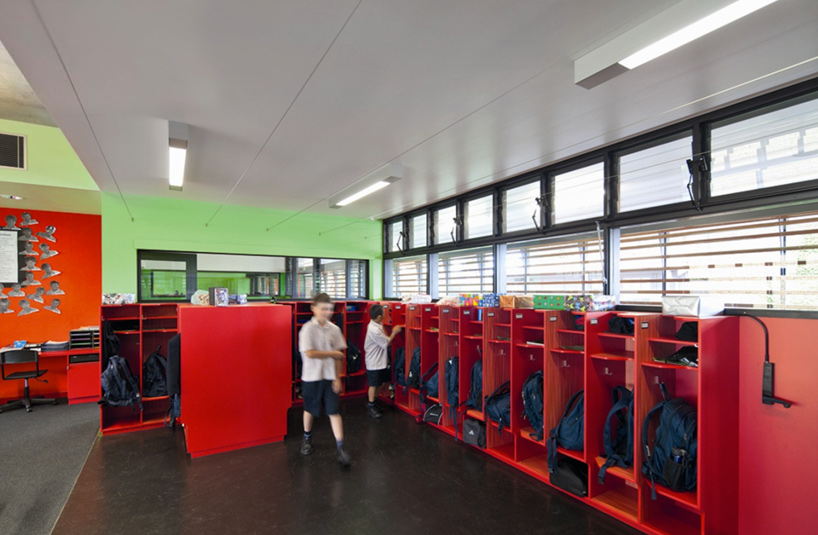
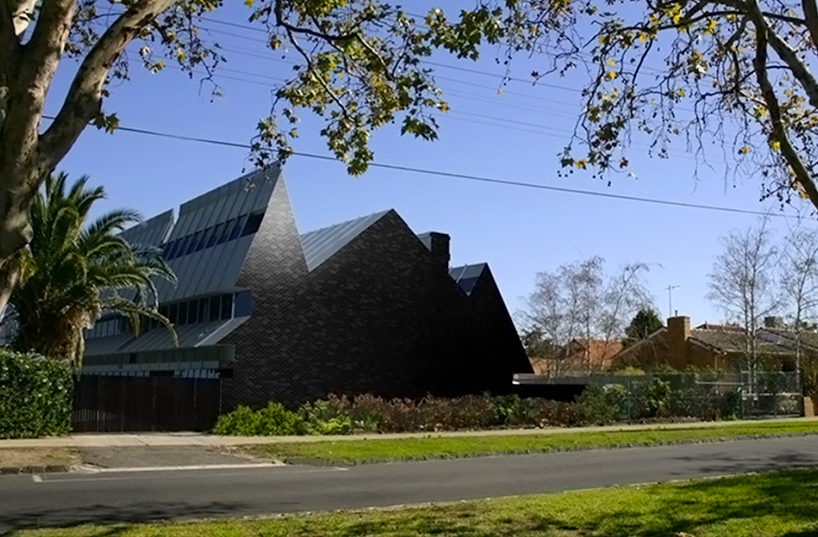 exterior profile
exterior profile site and floor plan / level 0
site and floor plan / level 0 floor plan / level +1
floor plan / level +1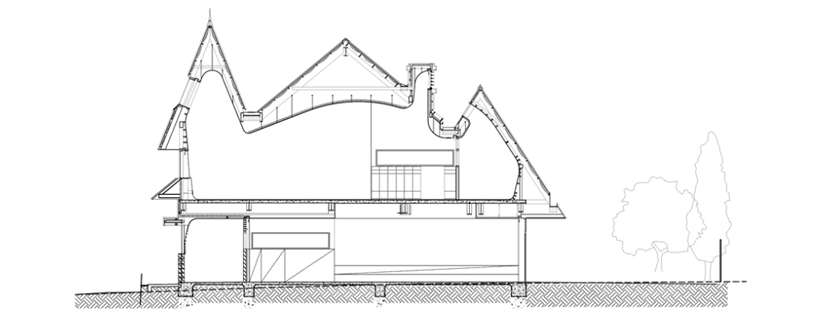 cross section
cross section south elevation
south elevation north elevation
north elevation